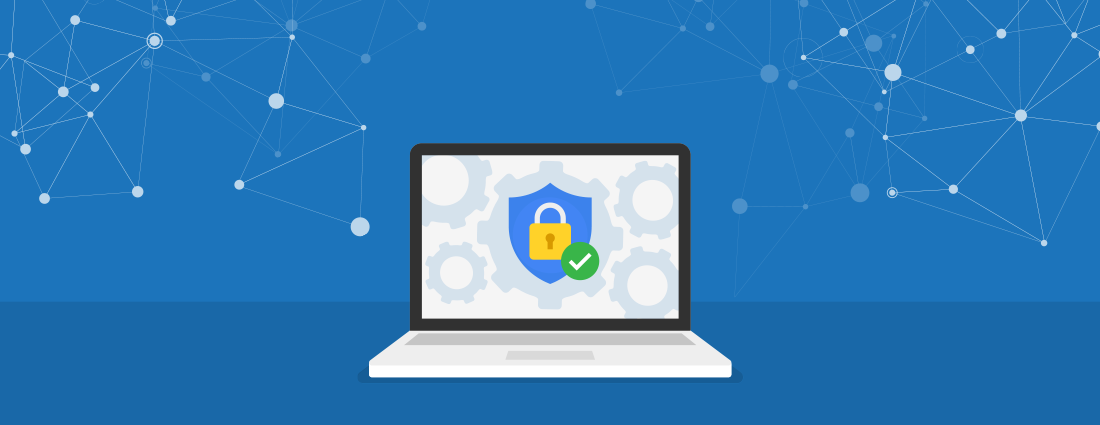
Data security is a top concern for modern businesses. And many organizations have industry standards, like HIPAA or government regulations, like GDPR, or compliance in banking. Keeping your data secure and your processes compliant can seem complicated, especially if you’re using many different types of business applications in your daily tasks. That’s why it’s important to choose tools with built-in security.
Before choosing any new solution, you need to determine if it’s going to help you stay compliant in your processes or complicate your processes. Does the tool let you control access by different types of users? Does it keep track of user history and changes made to workflows? Does it offer a disaster recovery process to prevent data loss? A tool built with security in mind gives you control over these essential items that help you stay compliant and keep your company’s important information private.
A robotic process automation (RPA) solution can help you automate your most repetitive tasks to make your life easier and more efficient without leaving your data vulnerable. Need fast report generation for an audit? An RPA solution can provide that information automatically and with no human needing to encounter any private data.
We recently hosted a webinar on security and RPA that featured our Automate product. Automate is an RPA solution with the features you need to get full control of your data to ensure you’re in compliance. Here are a few of the most important features needed to stay compliant:
Role-Based Access
When you think of data breaches, your mind probably goes to an outsider trying to get in. But a very important aspect to keeping your data safe is knowing who on the inside has access to what data. Do you know how many users can access workflows and processes on your system? If someone from accounting needs to run reports, can they access everything or just pertinent jobs or workflows? Without the ability to limit the type of access for your users, you may be putting your data center in a vulnerable position.
Automate makes it easy to add controls to any of the environments you may have. Access to each task or workflow can be based on specific environments—whether a test or production system, or even to a specific application. You can base access on job description (i.e., a developer, HR, finance role, etc.) and grant access only to the applications and data someone needs for their tasks. Automate even lets you limit access groups to individual jobs or tasks and limit what a user can do—whether that’s make changes, execute, view only, or be completely excluded. Role-based access ensures that personal data is only accessed by users on a need-to-know basis. Keeping private information private is the biggest part of compliance standards like HIPAA and GDPR.
Detailed Audit History
Having good policies and rules in place to meet the requirements of auditors is only half the battle—do you have the documentation to prove you’re in compliance? You’ll need to document those policies and show a history of any exceptions. Without a system in place that automatically creates documentation, you’ll end up spending lots of time and energy gathering that information when auditors show up.
Automate is self-documenting and audited automatically. All actions are tracked by date, time, and user and job failures also track the reason. Automate also records any exceptions or event types that need to be reported for compliance to HIPAA, GDPR, or other standards. And you can generate logs from all your important data points to aggregate audit data into a single location for reporting or creating dashboards. Keeping a detailed history of what’s happening on your system helps you easily spot where something went wrong or a procedure wasn’t followed so you can better understand how to stop problems and improper usage.
Disaster Recovery Processes
Not only can a disaster recovery process protect you from catastrophe like floods and fires, it can also help you limit downtime caused by everyday problems like system and user errors. Downtime can be painful when you can’t access the data you need to complete a task. Automate can help you easily set up disaster recovery processes that will kick in automatically to keep you up and running no matter what problems arise.
Disaster recovery and high-availability options can be easily configured into your Automate environment. Automate agents can be set up to automatically failover to a standby server when necessary and with Automate, you can install test and development environments on separate host systems. Depending on the size of your company, you can also manage these environments by simply using separate Automate agents. Exporting and importing workflows from one system to another is simple, whether using two systems sharing a database or a cluster environment for continuous availability and reliability, to make setting up a disaster recovery environment even easier with Automate.
On top of these three great features, Automate does not store any customer data. And with the RPA processes, you can ensure no human touches that private information. Automate is a safe solution that can help you maintain compliance with industry standards while not leaving your data vulnerable.
If you’re ready to see the benefits of an RPA solution for yourself, set up a demo of Automate. Our RPA experts will show you how Automate can help and will be available to answer any questions you might have!